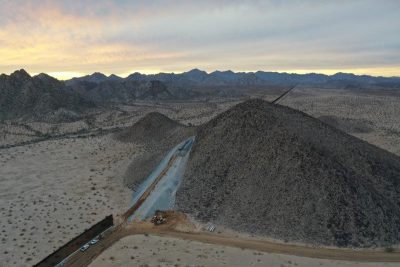Biden Administration Should Remove Border Walls, Keep Wildlife Corridors Open Along U.S.-Mexico Border

All Global Research articles can be read in 51 languages by activating the Translate Website button below the author’s name.
To receive Global Research’s Daily Newsletter (selected articles), click here.
Click the share button above to email/forward this article to your friends and colleagues. Follow us on Instagram and Twitter and subscribe to our Telegram Channel. Feel free to repost and share widely Global Research articles.
***
The Biden administration should remove border walls in six locations along the U.S.-Mexico border, abandon plans to build new sections of wall and remove stadium lighting from conservation lands, the Center for Biological Diversity said in comments submitted today to Customs and Border Protection. The comments are in response to the agency’s request for input on proposed remediation projects in California, Arizona and New Mexico.
“If Customs and Border Protection is serious about healing the borderlands, it should start by tearing down these wildlife-killing walls and removing stadium lights from wilderness areas,” said Laiken Jordahl, Southwest conservation advocate with the Center for Biological Diversity. “For more than a decade this agency has ignored our nation’s environmental laws, bulldozed wildlands and steamrolled communities to build hundreds of miles of disastrous border walls. The only way to right these wrongs is to remove the wall once and for all.”
Customs and Border Protection plans to clean up waste and control erosion from border wall construction, among other remediation efforts. The border agency also plans on “closing small gaps” in the border wall, though it has failed to describe how many gaps will be closed, where these gaps are and how much new wall will be built. Some of the last remaining border wall gaps are within ranges of endangered animals like Peninsular bighorn sheep, jaguars and Mexican gray wolves.
“Closing border wall gaps would be devastating for endangered species and other wildlife,” Jordahl said. “Mexican gray wolves, jaguars and Peninsular bighorn sheep have already seen their ranges sliced in two by border barriers. Some of these so-called gaps are the last openings wildlife can use to migrate between the U.S. and Mexico.”
The Center’s comments also call on the agency to remove stadium lighting from wilderness areas, wildlife refuges and conservation lands. This follows a recent report detailing the installation of at least 1,800 currently inoperable stadium lights across 60 miles of protected lands on the Arizona border. If turned on, these lights will have dire implications for conservation lands, animal migration routes and wildlife. Border lights already threaten migratory birds, nocturnal pollinators and habitat for dozens of endangered species in all four border states.
The comments urge Customs and Border Protection to immediately initiate the National Environmental Policy Act process to remedy severe shortcomings in stakeholder engagement, Tribal consultation, environmental analysis and public input that have plagued border wall constriction for more than a decade.
Beyond jeopardizing wildlife, endangered species and public lands, the U.S.-Mexico border wall is part of a larger strategy of ongoing border militarization that damages human rights, civil liberties, native lands, local businesses and international relations. The border wall impedes the natural migrations of people and wildlife that are essential to healthy diversity.
*
Note to readers: Please click the share button above. Follow us on Instagram and Twitter and subscribe to our Telegram Channel. Feel free to repost and share widely Global Research articles.
Featured image: Border wall construction across the western stretch of the Cabeza Prieta National Wildlife Refuge. Photo credit: Russ McSpadden, Center for Biological Diversity.

